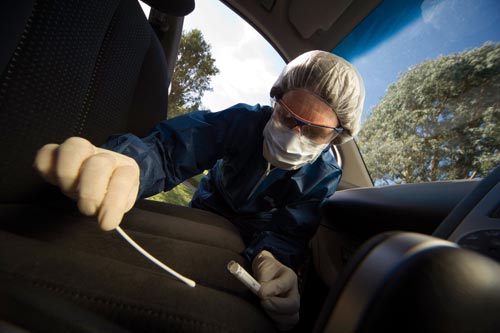
An Environmental Science Research scientist takes a swab from a stolen car in the 2000s. DNA samples can be obtained from bodily fluids, hair or skin left by offenders. These profiles are entered into the Crime Sample Database which holds records of unsolved crimes. Profiles can then be searched through the National DNA Databank which holds DNA profiles of individuals. The overall match rate is very high, with 63% of unsolved cases from the Crime Sample Database linked to individuals – 30% are also linked to another crime.
Te whakamahi i tēnei tūemi
ESR - Institute of Environmental Science and Research
This item has been provided for private study purposes (such as school projects, family and local history research) and any published reproduction (print or electronic) may infringe copyright law. It is the responsibility of the user of any material to obtain clearance from the copyright holder.








Tāpiritia te tākupu hou